What Can You Conclude From the Figurative Language You Identified in the Previous Question?
Figurative Language
To truly understand English language, you must accept some knowledge of the most mutual types of figurative linguistic communication.
Click Hither for Step-by-Step Rules, Stories and Exercises to Practice All English Tenses

What doesfigurative mean?
Figurative means that words are used in a way that is dissimilar from the usual meaning. That fashion the description is more interesting or impressive. Figurative linguistic communication creates a picture in your listen.
| For example: He is well-nigh to explode! We do not hateful to say that the human will actually explode. We only desire to say that he is extremely angry. So nosotros use the verb "explode" in a figurative mode. In other words, we use a discussion that usually describes something else. That mode the description is more interesting. It creates a certain picture in the heed. |  |
The opposite of figurative is literal
Literal means that you mean what you say exactly.
| For example: He is about to explode! Hither nosotros do mean to say that the man will really explode. The homo holds fireworks, and it looks dangerous enough to explode. So here we use the verb "explode" in a literal mode. In other words, we use the usual meaning of the word. |  |
Figurative comes from the give-and-takefigure (alsofigure of speech).
- A figure of speech is a discussion or phrase used in a different manner from its usual pregnant in order to express a particular meaning.
In the almost instance, "explode" is a figure of speech.
Literal comes from the Latin word littera, which means "alphabetic character."
Jump to:
- Figurative or Literal
- Figurative Language Definition
- Types of Figurative Linguistic communication
To get a improve understanding of figurative language, permit's look at some mutual figurative sayings:
"Sam is a pig!"
This is an case of figurative linguistic communication.
This judgement does non hateful that Sam is actually an creature.
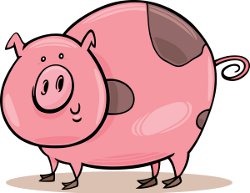
This judgement is a figure of speech communication meaning that Sam is very messy and does not have good manners.

"Beth allow the cat out of the bag
almost Lisa's surprise political party."
This is another instance of figurative language.
This sentence does not mean that Beth had a cat in a handbag and let it out.
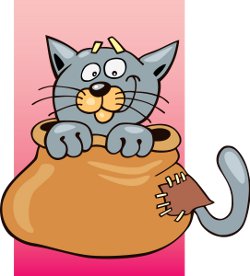
Native English speakers understand this judgement is figurative linguistic communication meaning that Beth told Lisa the underground virtually the surprise political party.
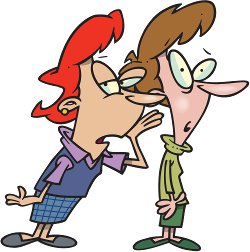
Figurative or Literal
To truly understand figurative linguistic communication, y'all must outset sympathise the terms "figurative" and "literal."
Literal
If a statement is "literal" it is truthful. You can believe every discussion. When y'all say something "literally," yous mean exactly what you say.
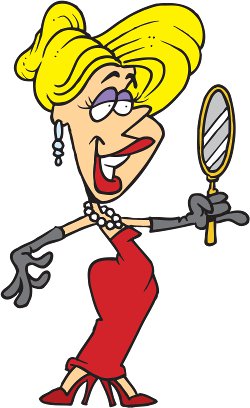
She lo oks beautiful in her red wearing apparel!
This is a literal argument because the writer thinks the lady looks beautiful. The writer is simply stating that she looks beautiful.

He is a very big man.
This is a literal argument. The author means that the man is big and potent.
These statements are literal and can sometimes be boring! To add involvement, writers often write in a figurative way.
Figurative
"Figurative" is the reverse of "literal." You practise non believe a figurative statement give-and-take for word. When you lot say something "figuratively," you are usually making a comparison to give a description or make a point.

She looks like a million dollars!
This is a figurative statement, because a person tin can't actually look exactly like money. The statement means that she is well dressed and looks beautiful.

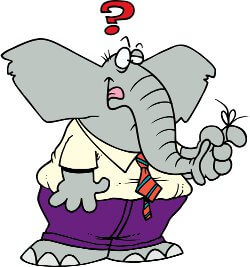
He is as large as an elephant!
This is besides a figurative statement because a person cannot be every bit big as an elephant. The argument means he is very large. The writer compares the man to an elephant to help the reader visualize the big, strong human being!
Figurative language definition
Figurative language is a give-and-take or phrase that cannot exist taken literally.
Writers use figurative language to draw things, people, or ideas.
Mutual reasons to employ figurative linguistic communication:
- for comparison
- for emphasis or stress
- to make something clear
- to say something in a new way
- to help the reader/listener form a moving-picture show in their listen
- to make a story or poem interesting

If used correctly, figurative language can greatly improve your writing and speaking.
When reading, speaking, or writing in English, information technology is important to understand the significant of some common figures of oral communication.
Outset, permit's look at definitions and examples of the most common types of figurative linguistic communication.
Types of figurative language
In that location are several common types of figurative language used in the English language.
Simile and metaphor
Similes and metaphors are the 2 most common types of figurative linguistic communication. They are both used to compare two dissimilar things that do not usually go together.
The deviation between simile and metaphor is that a simile uses the words "similar" or "every bit" and a metaphor does not.
with like / as => simile
without like / as => metaphor
A) A simile is a comparison of two dissimilar things using the words " like " or " as ."
Examples:
- She runs fast like a cheetah.
(She runs very fast.)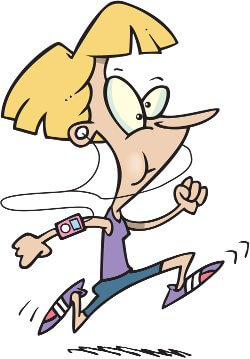
- The children were as quiet every bit mice this morning time.
(The children were very serenity.)
B) A metaphor is a comparing of two dissimilar things, without "like" or "equally."
Examples:
- The snowfall is a coating over the house.
(The snowfall covers the house.)
- My fiddling girl is an angel.
(My little girl is very nice and sweet.)
Click here for the full commodity on the simile and metaphor in English.
Idiom
An idiom is a normally used phrase that does not mean what it says. It cannot exist taken literally. There are many common idioms in the English linguistic communication.
Knowing the meanings of common idioms will assist you empathise American English better. For a list of some commonly used idioms and their meanings, click hither: Idiom examples
Examples:
- My auto just kicked the bucket.
(kicked the bucket = broke down, end working) - Bob was feeling blue after his girlfriend left him.
(feeling blue = feeling sad)

Click here for the full article on English idioms.
Hyperbole
A hyperbole is an obvious exaggeration. Hyperboles are normally used to make a point. Hyperboles cannot be taken literally.
Examples:
- I am and so hungry I could eat a horse!
(I am very hungry.) - We waited in line forever!
(We waited in line for a long time.) - The coffee was so hot, I was spitting flames!
(The java was very hot.)
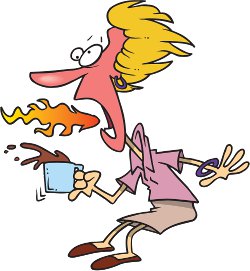
Click here for the full article on the hyperbole in English.
Personification
Personification is when a human characteristic is given to something that is non man, such equally an object or an animal. Writers personify objects to provide good descriptions.
Examples:
- My pen was flight across the folio.
(I was writing very fast.) - The leaves danced in the wind.
(The wind was blowing the leaves around.)
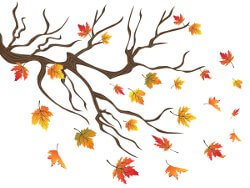
Click here for the full article on personification in English language.
Alliteration
Ingemination is the repetition of the initial sound in a series of words. Alliteration is commonly plant in poetry and rhymes.
Examples:
- She sells seashells by the seashore.
- Lazy lizards lounged by the lake.
Click here for the full article on ingemination in English.
Onomatopoeia
[on-uh-mat-uh-pee-uh]
Onomatopoeias are words used to describe a audio.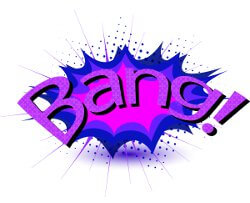
Examples:
- bang
- buzz
- moo
- click
- smack
Click here for the full article on the onomatopoeia in English.
Cliché
A cliché is a common expression that has been overused. Clichés can be other types of figurative language.
Examples:
- easy equally pie
(very piece of cake) - let the true cat out of the bag
(tell a secret) - stick in the mud
(someone who does not desire to endeavor anything new) - slept similar a infant
(very well)
Click here for the full article on the cliché in English.
Pun
A pun is a play on words. Puns are meant to be clever and funny. Many jokes are actually puns.
There are ii ways to create a pun:
1. Utilize words that sound the same but have different meanings.
2. Utilise a discussion that has multiple meanings.
Examples:
- I took a job as a baker because I knead dough.
(A bakery can knead (mix) bread dough. People piece of work considering they need dough (money).) - Why did the bee become to the doc? Considering she had hives.
(A bee lives in a hive. Hives is also an illness.) - The golfer had two pairs of pants in case he got a pigsty in one.
(A golfer can make the ball in the hole on the first try. Or the golfer can get a hole in i pair of pants.)

Click here for the full commodity on the pun in English.
Click here to learn most English language Proverbs too.
Irony
Paradoxes, Oxymorons, and Contradictory Statements
Run into as well: our lesson on Paradoxes, Oxymorons, and Contradictory Statements
This was just an overview of each type of figurative language. To larn more than virtually a specific type, click the links to the full articles. Now that y'all have learned virtually the types of figurative linguistic communication, it is time to review and practise with this figurative language quiz!
This was an overview of figurative language. Now that you lot understand it, it is time to practice! Become our ESL Books.
Source: https://www.really-learn-english.com/figurative-language.html
0 Response to "What Can You Conclude From the Figurative Language You Identified in the Previous Question?"
Post a Comment